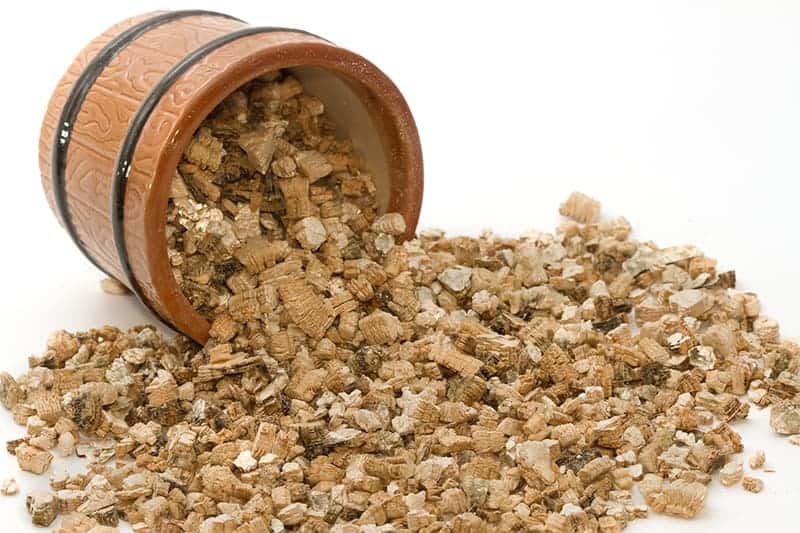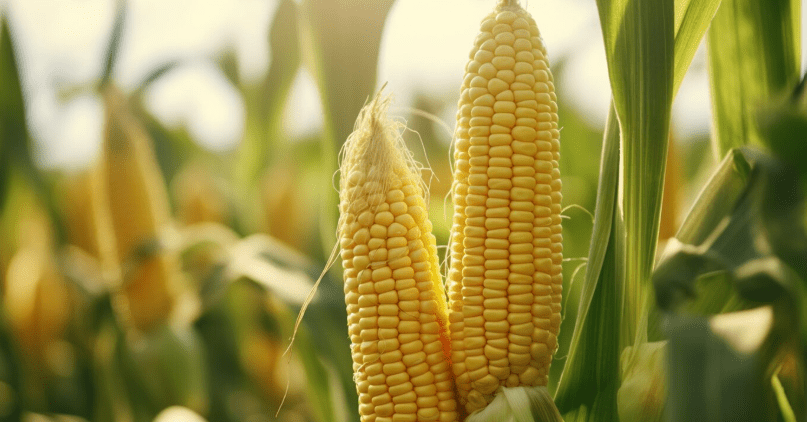If you’re searching for a material to boost soil performance or even serve as a complete substitute, vermiculite is a worthwhile choice. It is frequently included in potting blends and favored by experienced gardeners and nursery professionals for enhancing seed sprouting and promoting quick root development in plant cuttings.
Vermiculite is also incredibly useful for reducing the risk of overwatering and root rot, thanks to its excellent ability to hold moisture and gradually release it based on the plant’s needs. But what is vermiculite, and how can it help support healthier plant growth?
Table of Contents
ToggleWhat Is Vermiculite?
Vermiculite is a naturally found mineral that appears as shiny flakes, typically deep gray to light brown. These flakes are technically a hydrated magnesium-iron-aluminum silicate. When exposed to high temperatures in specialized industrial furnaces, they expand and form accordion-like shapes, resembling tiny, folded layers.
This expanded form of vermiculite is most often used in gardening, primarily to enhance soil structure or support young seedlings in developing roots more effectively.
How to Use Vermiculite in the Garden
The type of vermiculite used in gardening is always the expanded, or exfoliated, form. This version offers a range of valuable properties that can boost both soil performance and plant health. It helps improve airflow in the soil, retains water and nutrients effectively, is lightweight, non-toxic, sterile, resistant to rotting or molding, and has a neutral pH level.
Enhance Soil Structure
Vermiculite is an effective way to upgrade low-quality soil. If your garden has dense clay, poorly draining, or overly sandy soil, most plants will find it difficult to survive, let alone thrive. You’ve probably heard the advice to “improve the soil before planting,” but what does that really mean? Vermiculite provides a practical solution. Blend it into the soil at about a 1:2 ratio and dig it in well. This addition greatly improves soil aeration, helping roots establish more easily. It also holds onto moisture and nutrients, giving plants a stronger foundation to grow.
Support Root Cuttings
Gardeners often rely on vermiculite for propagating cuttings. It can be used in different ways. Mix it with potting soil or combine it with bark to create a soilless blend. No matter how it’s used, vermiculite provides stability for cuttings while accelerating root development. If you’re aiming for quicker rooting and a higher success rate in propagation, vermiculite is one of the best materials to choose.
Seed Germination
Vermiculite is excellent for starting seeds. It creates ideal conditions that help seedlings emerge faster. When using it alone, be cautious when watering. Just a little is enough to avoid overwhelming the seeds. Vermiculite slowly releases moisture in line with the seedlings’ needs. Once the first leaves appear, it’s helpful to add a diluted liquid fertilizer, since vermiculite doesn’t naturally provide nutrients like soil does. When the young plants are ready to move outdoors or to bigger pots, they can be transferred easily without harming their roots.
Container Planting
Vermiculite is a valuable addition to potted plants. Mixing it into your potting mix improves airflow and water retention, which encourages a stronger, more extensive root network. This helps plants absorb nutrients more efficiently, leading to healthier, more vibrant growth. Another bonus, since vermiculite holds moisture and releases it gradually, is that you won’t need to water your plants as often.
Lawn Seeding
After scattering grass seed on your lawn, apply a thin layer of vermiculite on top and mist it gently with water. A good rule of thumb is to use roughly three cubic feet of vermiculite for every 100 square feet of lawn space. This layer helps speed up germination, boosts seed success rates, and supports even, lush coverage. It also moistens the soil and shields the delicate seeds from heat stress.
Fresh Cut Flowers
If you enjoy arranging fresh flowers from your garden, vermiculite offers a clever alternative to using a vase full of water. Just fill a container with moist vermiculite and insert your cut flowers. It reduces the need for regular water changes, minimizes the risk of spills, and helps keep your blooms fresh for longer.
Store Bulb and Root
For plants that need to be kept indoors during the colder months, vermiculite provides a simple and effective storage method that keeps bulbs and roots in top condition. Once you’ve dug them up, allow them to air-dry for a few hours. Then place them in a container filled with vermiculite. Its absorbent nature helps draw away any excess moisture, reducing the risk of rot, while still preserving the bulb’s internal moisture levels.
Transplanting Plants
Whether you’ve grown seedlings or just brought home new plants from a nursery, transplanting them into your garden is an important step. Vermiculite makes this process easier and improves your plants’ chances of adapting successfully.
To use it, dig a hole slightly larger than the plant’s root ball, mix vermiculite with garden soil, and add it to the hole. Set the plant in place, then fill the remaining space with the same mix. It will boost root ventilation and maintain balanced moisture.
Mulch
Vermiculite can also serve as a light mulch for certain plants, such as tomatoes or roses. Sprinkling a few inches over the soil surface helps manage moisture levels and insulates roots against heat fluctuations.


